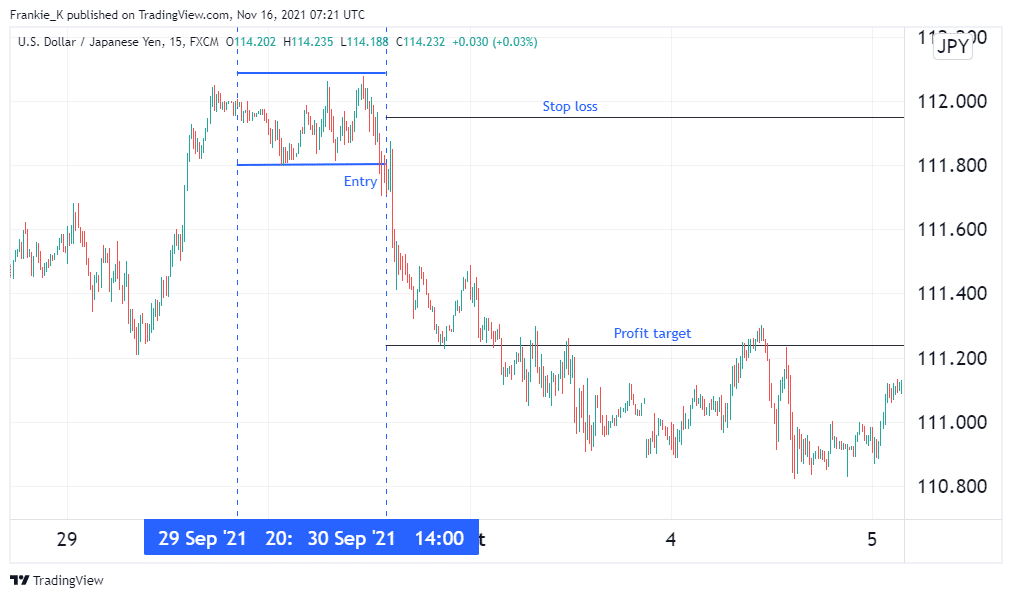In forex, currency pairs are divided into major and minor pairs. Major pairs belong to the world’s largest economies, and they are often the most traded pairs in terms of volume. USDJPY is one such major pair. When you’re trading USDJPY, the dollar is the base currency while the yen is the quote currency. This means the pair’s price at any given moment refers to the number of Japanese yen required to purchase one US dollar.
Why trade USDJPY?
Well, for one, as aforementioned, it is a major currency pair. According to the BIS, it is the second most traded pair globally, accounting for around 13% of all global forex trades. These large volumes afford it high liquidity, which attracts long-term and short-term traders alike. Additionally, due to a large number of traders on both the buy-side and sell-side, brokers often offer competitive spreads on the pair. In fact, it is not uncommon to see spreads of fractions of a pip.
These traders often rely on a pair’s volatility to make money trading currencies. An indicator known as the average daily range is used to measure this volatility. If you apply this tool to a USDJPY price chart, you’ll find that the pair enjoys a fair amount of volatility, which traders can exploit for profit.
Further, there is no shortage of analytical information on this pair. Several websites carry out periodic fundamental and technical analysis as well as market research on USDJPY, which is especially favorable to novice traders. On top of it all, the high liquidity and trading volumes cause predictable trends in the pair’s prices, as trends tend to last longer and adhere to historical support and resistance levels.
What’s the ideal time to trade the pair?
The trading day is divided into four major sessions, namely the Australian session, Tokyo, London, and New York sessions. This means it is possible to trade forex pairs 24 hours a day, five days a week. However, the ideal time to trade the USDJPY pair, or any pair for that matter, is when its traded volume and volatility tend to be highest. This is because, during such periods, the high volatility presents the increased potential for profit, and brokers offer the tightest spreads.
The USDJPY pair is characterized by moderate volatility for most of the trading day. However, during the Asian session, the pair’s volatility shot up as most of the participants entered the market. This is usually around 11:00 PM to 8:00 AM GMT. Since the pair is heavily affected by the Fed and Bank of Japan’s decisions, significant price moves may be observed whenever either of these banks releases their statements.
Factors affecting the pair’s price
First and foremost, the difference in interest rates between those set by the Fed and those of the Bank of Japan have a huge impact on this pair’s price. Traditionally, the JPY has been enjoying lower interest rates than most other currencies. This attracted large investors into executing carry trades to take advantage of this differential. Recently, with the Fed reducing interest rates to curb the COVID-19 pandemic, this differential has reduced, making carry trades less favorable.
Additionally, the two central banks also release monetary policy decisions that influence the pair’s price. Such include the cap on inflation and quantitative easing measures. An increase in QE is bearish for a country’s currency, while a tapering of asset purchases tends to be bullish.
There are other economic releases from the two countries which shed light on the state of their economies. Such releases include Nonfarm payroll data from the US, trade balance data from both nations, GDP, retail sales, and manufacturing data. Such releases also have an impact on the pair’s price.
Japan has very little oil reserves, which means its major supply comes from imports. The US, on the other hand, only imports nearly half of its oil needs. Thus, when oil prices skyrocket, they tend to have a much more detrimental effect on the JPY than the USD. Therefore, the yen is much more sensitive to oil price fluctuations than the dollar.
How to trade the pair
A suitable strategy to trade this pair involves waiting for breakouts from consolidation periods. It involves waiting for the consolidation phase, which usually happens between New York close to around 11:00 AM GMT. This consolidation usually adheres to a clear upper and lower limit.
After this session, wait for a breakout in any direction. If it is upwards, enter a long trade and aim for a profit target twice the width of the consolidation channel away from the entry. If it is downward, enter a short trade with the exact same target, only downwards. A suitable stop loss would be at the center of the consolidation range.

From the example above, we see the pair was in consolidation for most of its inactive period. An hour before the New York session opened the next day, more participants entered the market, and the pair’s volatility rose, which manifested in a downward breakout. The target of twice the consolidation range’s width was hit just a few hours later, which would have marked the exit from our short trade.
When using this strategy, make sure that there were no false breakouts during the consolidation phase. Such breakouts may point to another fakeout, invalidating our entries and leading to losses.
Conclusion
The USDJPY is one of the most traded pairs in the FX market, second only to the EURUSD. For this reason, it enjoys high volatility and tight spreads, which increase the potential for profiting from its trades. The Bank of Japan and the Fed are the major causes of price fluctuations for the pair, as well as other economic releases from both countries and the price of crude oil. The best time to trade the pair is during the New York and Tokyo sessions.




